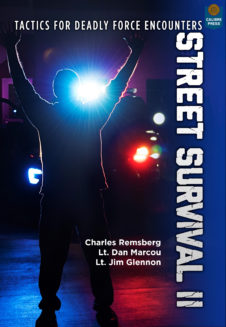A shooting incident is extraordinarily tense in a multitude of ways. That tension doesn’t stop after the smoke clears. Here are a few things to keep in mind that can help reduce trauma after an OIS.
Watch the little things that can make a big difference. In Chuck Remsberg’s book, Blood Lessons, an officer-involved in a major traumatic incident shared what he felt was the most supportive thing a fellow officer did for him after his incident and the least supportive.
The least supportive: A supervisor walked up to him and asked, “Did you have your hat on?” Those were literally his first words to this officer. Not, ‘Are you OK?’ Just a question about the hat. That hit hard.
The most supportive: A backup trooper quietly put his hand on his shoulder in a half hug…a move that comforted him greatly. The officer said that small gesture reassured him that everything was going to be OK and that he had the support of his brother and sister troopers.
As the fellow officer of someone who has been in an OIS, it’s important to check what you say. Comments like, “Nice work. That *#% had it coming!” or “Don’t sweat this…not a big deal. Clearly justifiable. Sleep well, you did the right thing.” almost never help. Much better to remember that regardless of the circumstances of the incident, it’s a rattling event for the officer involved. Take an approach that acknowledges this and voices support for the officer’s well-being with the understanding that it IS a big deal.
Keep officers in the know. Cops hate being kept in the dark and feeling vulnerable and out of control. They need to be aware of what’s going on and informed of the changing dynamics of a situation. Information gives them a sense of empowerment. Cutting them off from information can cause serious anxiety and duress. After a major incident, one of the things you can do to help involved officers navigate the emotional rollercoaster is to do just that: Keep them informed and help them get a fix on what they can expect as much as possible. Certainly, there are things that can’t be shared but to the greatest extent possible, keep them updated and informed.
Departmentally it’s also critical to get ahead of speculation, rumors and inaccuracies. There’s a lot of electrified buzz after a shooting. Everyone is trying to gather information as quickly as possible and figure out what went on and what’s next. If officers start trying to piece things together with small bits of information that can often be inaccurate, then start spreading that misinformation, the result can complicate things and prove detrimental, if not dangerous, to the involved officer. Consider compiling the core factual details of an incident and promptly sharing them at every roll call and with other agency support members so the entire department is accurately informed and on the same page.
Assign a liaison officer. When an involved officer is put on administrative leave after an OIS, assign a liaison officer from his or her unit who has weekly phone contact with the affected officer. These calls provide an opportunity to see if they need anything, to keep him or her updated on any developments and to provide valuable emotional support and fellow officer contact. This liaison officer proves to the affected officer that they’re not alone in this. The agency and fellow officers do care.
Validate. Unfortunately, it’s not uncommon for officers involved in traumatic events to report that they felt their agency just didn’t care about them. This can be devastating and have a long-term negative impact on the involved officer and others in the department. As an agency, make very clear that you do value your officer and you do understand that this is a difficult time. As one officer put it, “The message to the officer should be, ‘You’re important. Your job is important. We take what happened to you very seriously.’”
 For additional tips on how you can best survive the aftermath of a traumatic event and how you can support a fellow officer who has been in one, be sure to read Street Survival II.
For additional tips on how you can best survive the aftermath of a traumatic event and how you can support a fellow officer who has been in one, be sure to read Street Survival II.










0 Comments